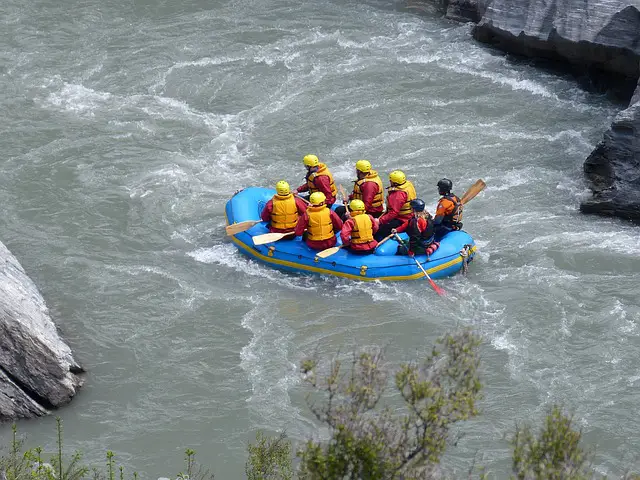As more people are embracing the outdoor life, backpacking arises as a favorite activity. Given the unpredictable nature of outdoor weather, protecting your gear becomes an essential aspect to consider. Among the various protective gear, dry bags for backpacking have emerged as a must-have for any outdoor enthusiast.
What are Dry Bags, and why are they Necessary for Backpacking?
Dry bags are specially designed waterproof bags used to protect your gear from water damage. The principle behind their design is quite straightforward: keep water out while preserving your items’ dryness.
Whether you’re crossing streams, facing a sudden downpour, or even capsizing your canoe, a dry bag will keep your gear dry. But beyond water protection, dry bags also offer a great way to organize your stuff. With various sizes and colors available, you can efficiently sort and retrieve your items without much hassle.
How do Dry Bags work?
The effectiveness of dry bags lies in their design. They are typically made from waterproof materials such as nylon or vinyl. Some have roll-top closures that create a watertight seal when buckled together. In addition, they can float if dropped in water, providing additional water protection.
Selecting the Ideal Dry Bags for Backpacking
Choosing a functional dry bag may seem a straightforward task, but several factors need to be considered.
Size and Capacity
Dry bags come in different sizes. The size you choose mainly depends on the items you plan to store. Smaller bags (5-10 liters) are perfect for personal belongings like phones, cameras, or clothes, while larger ones (20-30 liters) can accommodate items like sleeping bags and food.
Material and Durability
The choice of material directly affects the bag’s durability and weight. While Vinyl bags are durable and puncture-resistant, they can be heavy. On the other hand, nylon bags are relatively lighter but less durable. Therefore, consider your backpacking conditions and the nature of items you’re carrying when deciding on the material.
Sealing Mechanism
The ability of a dry bag to keep water out largely depends on its sealing mechanism. Most dry bags use roll-top closures, but higher-end models come with zipper seals, which offer a more secure closure.
Maximizing the Benefits of Dry Bags for Backpacking
So, how can you ensure you’re getting the most out of your dry bag?
Proper Packing
While dry bags are designed to keep water out, improper packing could compromise their effectiveness. Avoid overpacking as it might strain the bag and lead to breakage. Also, ensure you properly seal your bag by rolling the top at least three times before closing.
Periodic Checks
Regularly check your bag for any signs of wear and tear. Small holes or a compromised seal can allow water into the bag, damaging your gear. Repair or replace the bag as soon as possible if any defects are detected.
Proper Cleaning
While dry bags are resistant to water and dirt, they still need proper cleaning. Soil, grit, or salt could degrade the material over time. Rinse your bag with fresh water and leave it to dry before storing.
Final Thoughts
Dry bags for backpacking offer great convenience for outdoor enthusiasts. They provide valuable protection to gear, ensuring that backpacking adventures are not cut short by damaged equipment. Therefore, a careful selection and proper use of dry bags can guarantee a worry-free and memorable outdoor experience.




